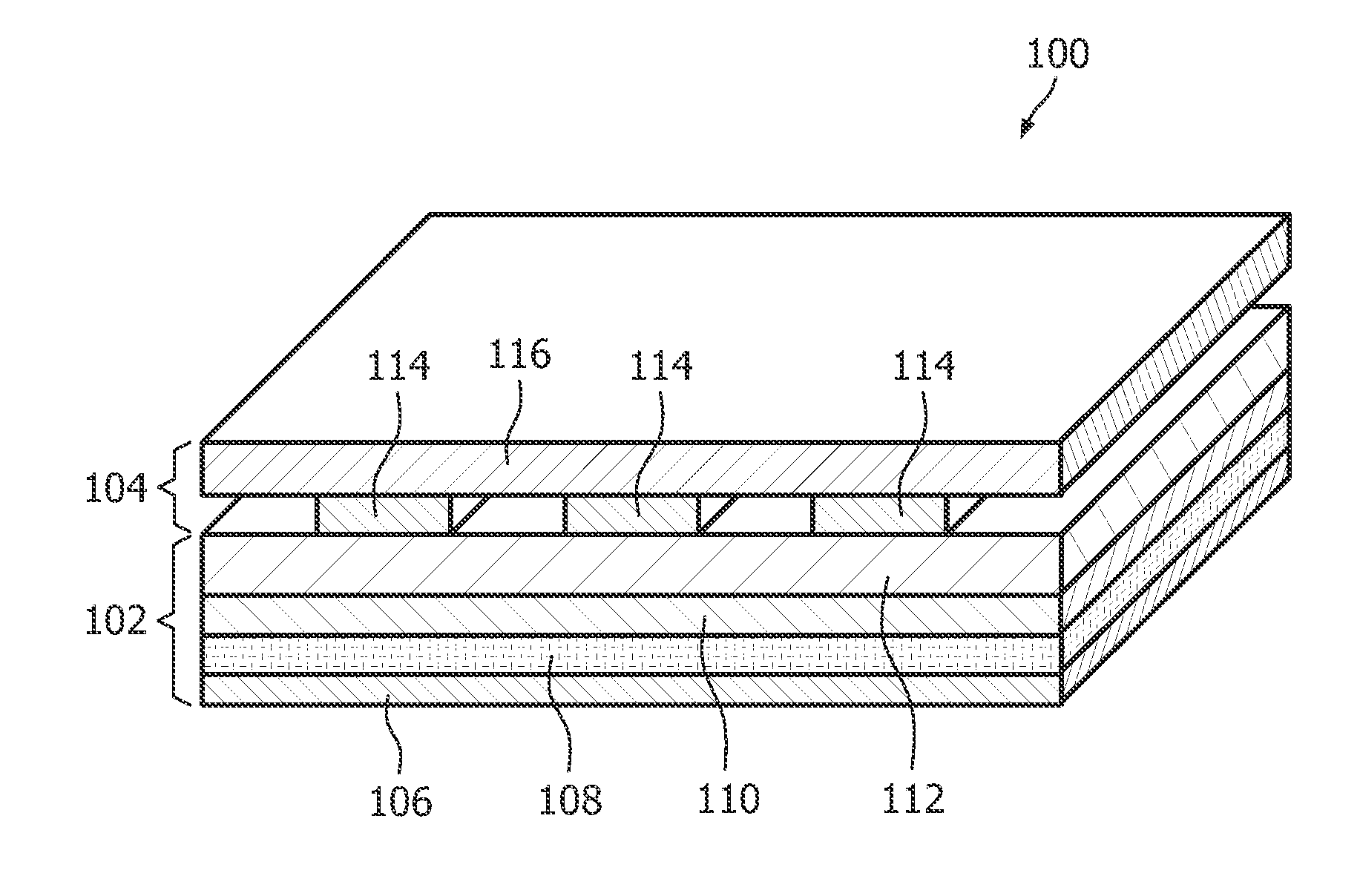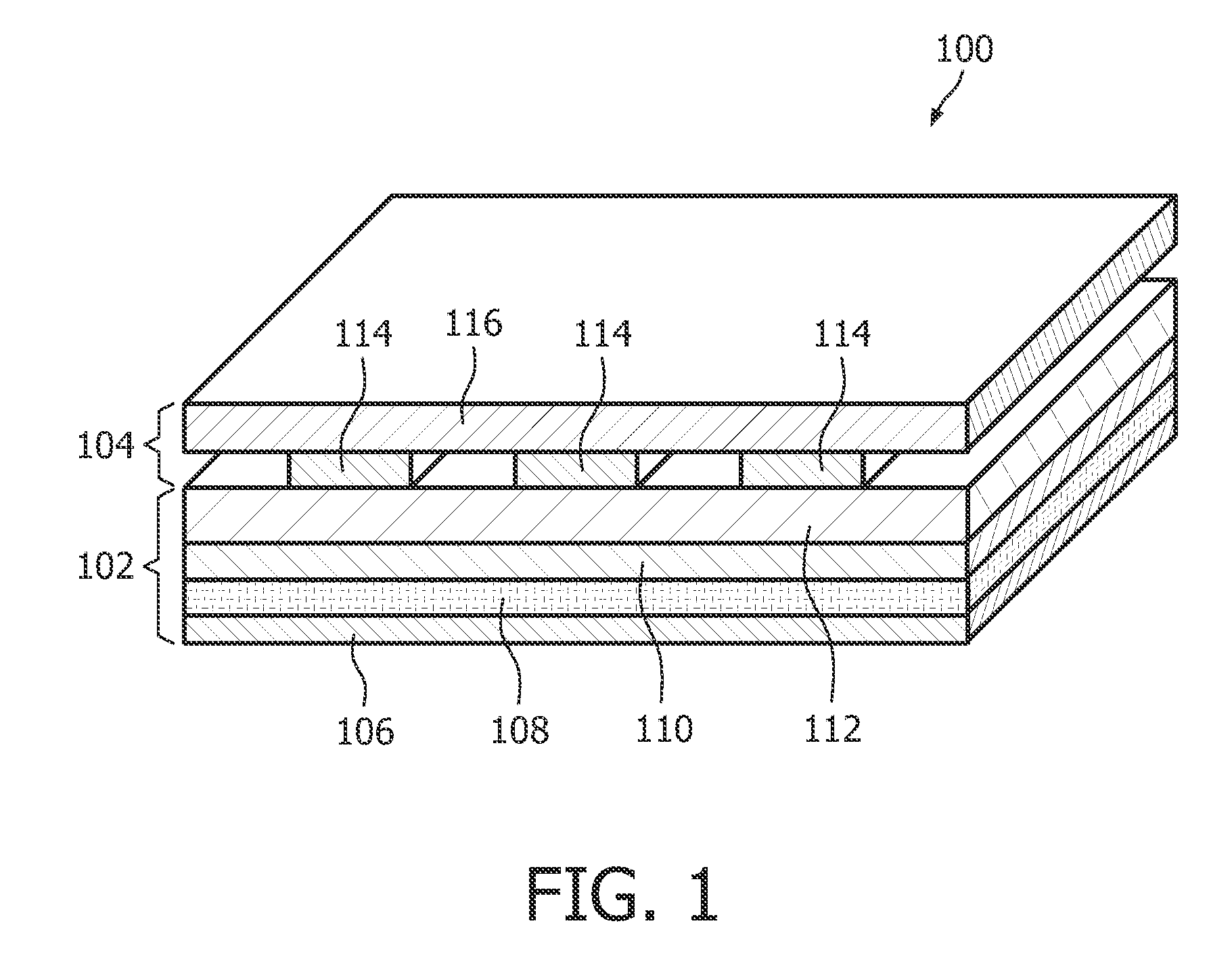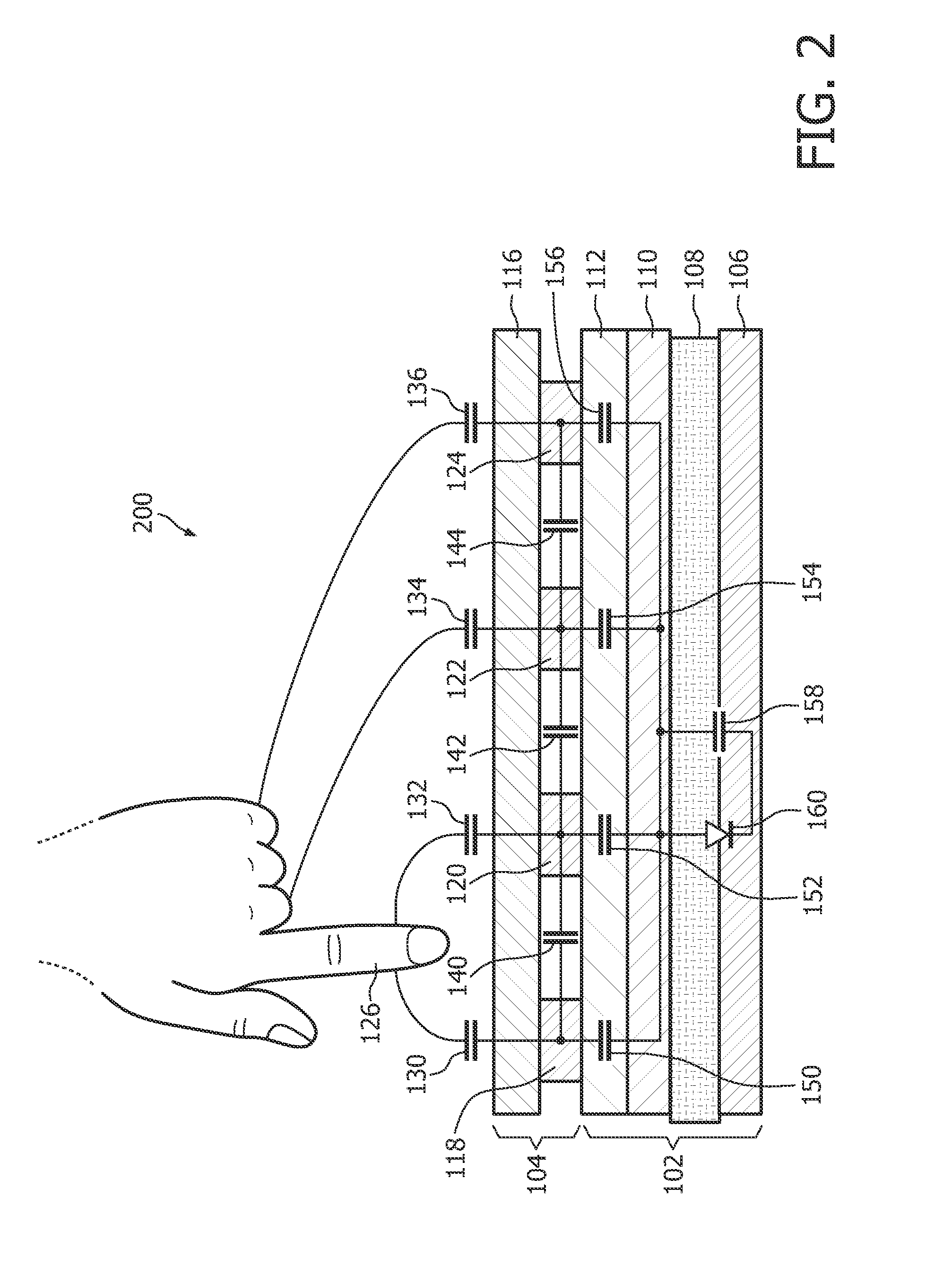OLED device and an electronic circuit
a technology of electronic circuits and diodes, which is applied in semiconductor devices, instruments, computing, etc., can solve the problems of difficult to determine the proper change in capacitance that will work for all conditions, and achieve the effects of reducing capacitance, reducing the thickness of the substrate, and reducing the capacitan
- Summary
- Abstract
- Description
- Claims
- Application Information
AI Technical Summary
Benefits of technology
Problems solved by technology
Method used
Image
Examples
Embodiment Construction
[0034]Like numbered elements in these figures are either identical elements or perform the same function. Elements which have been discussed previously will not necessarily be discussed in later figures if the function is identical.
[0035]FIG. 1 shows an OLED device 100 comprised of an OLED means 102 with a laminated NFI sensor foil 104. There is a substrate 112 which is part of the OLED means 102. The substrate 112 has two sides. The OLED means 102 is located on the first side and the NFI sensor 104 is located on the other side. The anode 110 is located directly against the substrate 112. Located next to the anode is the organic layer 108 and on the organic layer 108 is mounted the cathode 106. When a sufficient voltage bias is applied to the anode 110 and cathode 106, light is generated in the organic layer 108. Light then travels through the anode 110 and the substrate 112. On the second side of the substrate, is the NFI sensor foil 104. Located directly immediate to the substrate...
PUM
 Login to View More
Login to View More Abstract
Description
Claims
Application Information
 Login to View More
Login to View More - R&D
- Intellectual Property
- Life Sciences
- Materials
- Tech Scout
- Unparalleled Data Quality
- Higher Quality Content
- 60% Fewer Hallucinations
Browse by: Latest US Patents, China's latest patents, Technical Efficacy Thesaurus, Application Domain, Technology Topic, Popular Technical Reports.
© 2025 PatSnap. All rights reserved.Legal|Privacy policy|Modern Slavery Act Transparency Statement|Sitemap|About US| Contact US: help@patsnap.com



